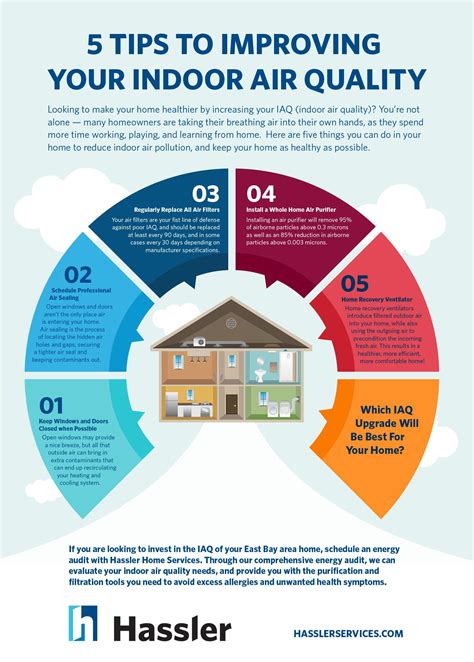The air we breathe is essential for our well-being, and indoor air quality plays a significant role in our overall health. With the rise of urbanization and increased time spent indoors, the importance of maintaining good indoor air quality cannot be overstated. Fortunately, advancements in technology have led to the development of tech air systems that can significantly improve indoor air quality. In this article, we will explore five ways these systems can benefit our health and comfort.
Indoor air quality is a complex issue, and many factors contribute to its degradation. Pollutants from outdoor sources, such as vehicle emissions and industrial activities, can seep into buildings through ventilation systems or open windows. Additionally, indoor sources like cooking, cleaning, and personal care products can release pollutants into the air. These contaminants can exacerbate respiratory issues like asthma, trigger allergies, and even lead to long-term health problems.
The good news is that tech air systems offer a range of solutions to mitigate these issues. By incorporating advanced technologies like sensors, filters, and purification systems, these systems can detect and remove pollutants, maintaining a healthy and comfortable indoor environment.
1. Advanced Filtration Systems

One of the primary ways tech air systems improve indoor air quality is through advanced filtration systems. These systems use high-efficiency filters that can capture even the smallest particles, including dust, pollen, and other airborne pollutants. Some systems also incorporate activated carbon filters, which can remove gases, odors, and volatile organic compounds (VOCs) from the air.
These advanced filtration systems can be integrated into existing HVAC systems or operate as standalone units. By removing pollutants and particles from the air, they can significantly reduce the risk of respiratory problems and create a healthier indoor environment.
Types of Filtration Systems
- HEPA (High Efficiency Particulate Air) filters: capture 99.97% of particles as small as 0.3 microns
- Activated carbon filters: remove gases, odors, and VOCs from the air
- Ionization filters: release negative ions that attract and trap pollutants
2. Air Purification Technologies

In addition to advanced filtration systems, tech air systems also employ air purification technologies to improve indoor air quality. These technologies use various methods to remove pollutants and particles from the air, including UV light, ozone generators, and photocatalytic oxidation.
Air purification technologies can be particularly effective against pollutants that are not easily captured by filters, such as gases and VOCs. By breaking down these pollutants at the molecular level, these technologies can create a healthier and more comfortable indoor environment.
Types of Air Purification Technologies
- UV light technology: uses ultraviolet light to break down pollutants and particles
- Ozone generators: release ozone molecules that oxidize and break down pollutants
- Photocatalytic oxidation: uses a catalyst to break down pollutants and particles
3. Smart Sensors and Monitoring Systems

Tech air systems often incorporate smart sensors and monitoring systems to detect and respond to changes in indoor air quality. These sensors can monitor a range of parameters, including temperature, humidity, and pollutant levels, providing real-time data on indoor air quality.
By analyzing this data, smart sensors and monitoring systems can identify potential issues before they become major problems. This allows for prompt action to be taken, ensuring that indoor air quality remains healthy and comfortable.
Benefits of Smart Sensors and Monitoring Systems
- Real-time monitoring of indoor air quality
- Prompt detection of potential issues
- Data-driven decision making for improved indoor air quality
4. Ventilation and Air Exchange Systems

Proper ventilation and air exchange are essential for maintaining good indoor air quality. Tech air systems often incorporate advanced ventilation and air exchange systems that can remove stale air and introduce fresh air into the building.
These systems can be designed to optimize air exchange rates, ensuring that indoor air quality remains healthy and comfortable. By removing stale air and introducing fresh air, ventilation and air exchange systems can reduce the risk of respiratory problems and create a healthier indoor environment.
Benefits of Ventilation and Air Exchange Systems
- Removal of stale air and introduction of fresh air
- Optimization of air exchange rates
- Reduced risk of respiratory problems
5. Energy Efficiency and Cost Savings

Finally, tech air systems can also provide energy efficiency and cost savings. By optimizing air exchange rates and reducing the need for heating and cooling, these systems can reduce energy consumption and lower energy bills.
Additionally, tech air systems can also extend the life of HVAC equipment by reducing the workload on these systems. This can lead to cost savings over time, as well as reduced maintenance and repair costs.
Benefits of Energy Efficiency and Cost Savings
- Reduced energy consumption and lower energy bills
- Extended life of HVAC equipment
- Reduced maintenance and repair costs






Gallery of Indoor Air Quality Improvement Techniques
We hope this article has provided valuable insights into the ways tech air systems can improve indoor air quality. By incorporating advanced filtration systems, air purification technologies, smart sensors and monitoring systems, ventilation and air exchange systems, and energy efficiency and cost savings, these systems can create a healthier and more comfortable indoor environment.
If you have any questions or would like to share your thoughts on indoor air quality, please leave a comment below. We would love to hear from you!
What is the most effective way to improve indoor air quality?
+The most effective way to improve indoor air quality is to use a combination of advanced filtration systems, air purification technologies, and ventilation and air exchange systems.
How can I monitor indoor air quality in my home?
+You can monitor indoor air quality in your home using smart sensors and monitoring systems that detect pollutants and particles in the air.
What are the benefits of using tech air systems?
+The benefits of using tech air systems include improved indoor air quality, reduced risk of respiratory problems, and energy efficiency and cost savings.
